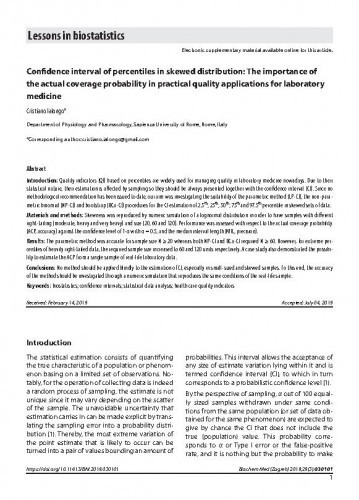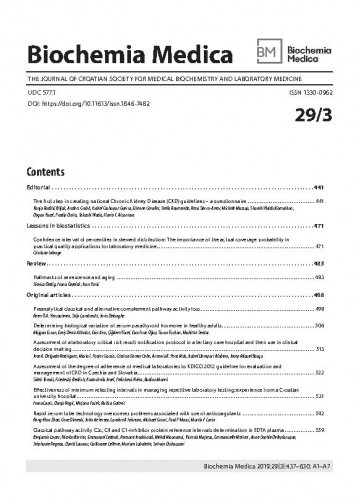Quality indicators (QI) based on percentiles are widely used for managing quality in laboratory medicine nowadays. Due to their statistical nature, their estimation is affected by sampling so they should be always presented together with the confidence interval (CI). Since no methodological recommendation has been issued to date, our aim was investigating the suitability of the parametric method (LP-CI), the non-parametric binomial (NP-CI) and bootstrap (BCa-CI) procedures for the CI estimation of 2.5th, 25th, 50th, 75th and 97.5th percentile in skewed sets of data.Materials and methods: Skewness was reproduced by numeric simulation of a lognormal distribution in order to have samples with different right-tailing (moderate, heavy and very heavy) and size (20, 60 and 120). Performance was assessed with respect to the actual coverage probability (ACP, accuracy) against the confidence level of 1-α with α = 0.5, and the median interval length (MIL, precision).Results: The parametric method was accurate for sample size N ≥ 20 whereas both NP-CI and BCa-CI required N ≥ 60. However, for extreme percentiles of heavily right-tailed data, the required sample size increased to 60 and 120 units respectively. A case study also demonstrated the possibility to estimate the ACP from a single sample of real-life laboratory data.Conclusions: No method should be applied blindly to the estimation of CI, especially in small-sized and skewed samples. To this end, the accuracy of the method should be investigated through a numeric simulation that reproduces the same conditions of the real-life sample.
Sažetak

 Biochemia medica : the journal of Croatian Society for Medical Biochemistry and Laboratory Medicine : 29,3(2019) / glavna i odgovorna urednica Daria Pašalić.
Biochemia medica : the journal of Croatian Society for Medical Biochemistry and Laboratory Medicine : 29,3(2019) / glavna i odgovorna urednica Daria Pašalić.